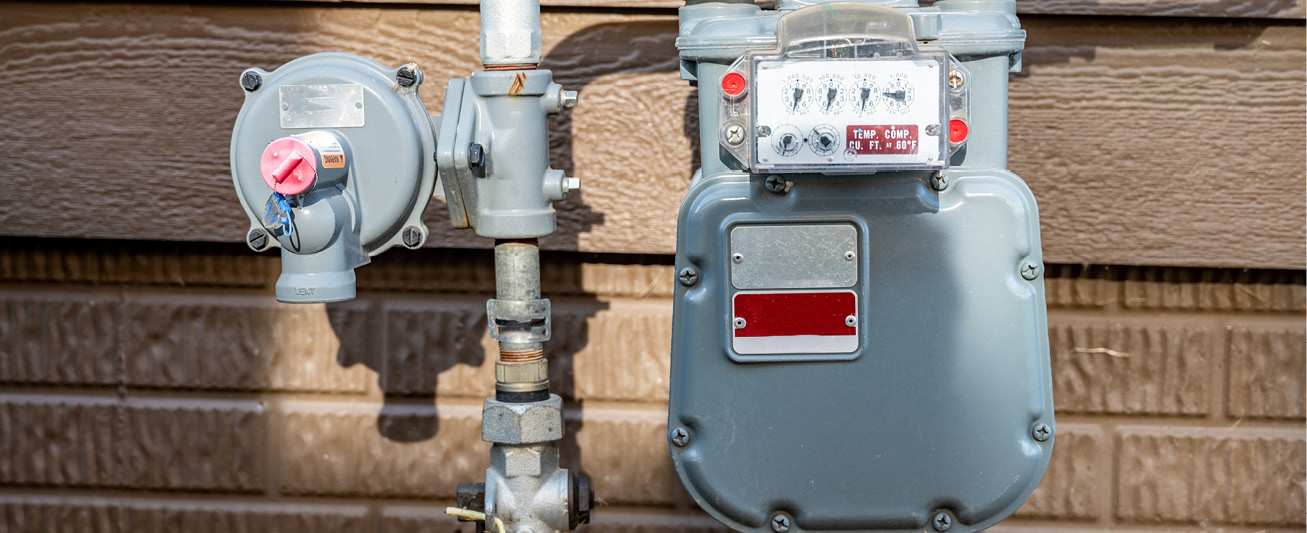
On Sept. 20, an Oakland County, Michigan, circuit judge granted summary judgment in favor of a natural gas supplier in a lawsuit that claimed the supplier had caused severely corroded customer-owned pipes to leak. The case is Maksymenko v. Consumers Energy.
Dmytro Maksymenko lived in a house in Commerce Township, Michigan. The house was owned by his mother, Lyudmyla Krykun. Natural gas was supplied to the property by Consumers Energy, ensuring a reliable energy source.
Exposed Steel Pipe
Consumers Energy provided gas from its underground distribution main through an underground service line to a meter located at the side of the house. Consumers Energy owned the main, service line and meter. The main was steel, and the service line was copper.
Steel pipe was connected to the outlet of the meter. This pipe ran about 28 feet alongside the house aboveground and underneath a deck, before it entered the basement of the house. This pipe was owned by the homeowner, Lyudmyla Krykun. Ms. Krykun later testified, through a Russian interpreter, that she was unaware of any inspections that had ever been performed on this section of exposed pipe.
Service Line Replacement
On Aug. 23, 2020, workers from Consumers Energy came to the house to replace the copper service line with a plastic line. The purpose of this work was to prevent corrosion at the connection between the service line and the steel main. Copper and steel are dissimilar metals, which can cause the steel to corrode, albeit at an extremely slow rate, particularly at the point where the metals are connected.
The Consumers Energy crew first exposed both ends of the copper service line, cutting the connection between the service line and the main and welding both ends shut to retire the copper line in place. They then connected the new plastic line to the main and ran it to the meter, using a pneumatic tool to push the pipe into place underground.
All of the work done by Consumers Energy at the site was not any more substantial than routine landscaping, with no major disruption.
Severe Corrosion
At this point, the crew air-tested the entire new line for leaks. None were found. It then leak-tested the line from the meter to the appliances inside the house. Again, no leaks were found. Finally, a crew member went inside the house to relight the appliances.
For the next 32 days, no one at the house smelled any odor of gas. However, on Sept. 24, the building exploded and Dmytro Maksymenko was injured. Investigators found that the customer-owned steel line under the deck was severely corroded and that there were two small cracks in the line. The first was about 8 feet downstream of the meter, and the second was about 26 feet from the meter.
Illegal Activity?
Investigators allegedly also found evidence consistent with the illegal manufacture of hash oil (a cannabis derivative). There were five 25-pound containers of odorless butane gas, which is used to manufacture butane hash oil (a high potency form of hash oil), found on the porch. Maksymenko stated he was only storing these tanks for someone else.
They also discovered extensive evidence allegedly consistent with the illegal manufacture of butane hash oil: 12 marijuana plants in the backyard, marijuana clippings on the front porch; a ledger in the safe of Maksymenko’s bedroom; a purification filter, marijuana processing canisters, Pyrex pans, an oven, a vacuum pump, a digital scale and another butane tank in the garage; and multiple guns.
Bad Vibrations?
Maksymenko denied that he had been manufacturing hash oil. He sued Consumers Energy, claiming that vibrations from its work a month earlier had caused the cracks in the corroded steel line under the deck. Consumers Energy responded with a motion for summary judgment, along with the opinions of an expert metallurgist.
In the opinion of the Consumers Energy expert, the explosion was caused by leaking butane from the containers stored on the site, and the cracks in the corroded gas line were caused by the explosion. These opinions were supported by her research and metallurgical testing. In response, the plaintiff presented opinions from a plumber, who argued that the work done by Consumers Energy at the site a month before the explosion could “very easily” have disturbed the corroded steel pipe and caused the cracks.
Attacking the Expert
Consumers Energy countered with a blistering attack on the credentials and methodology of the plaintiff’s plumbing expert. He had argued that the pneumatic tool used by the Consumers Energy crew to install the new plastic service line “created vibrations” that could have traveled through the soil and cracked the corroded pipe. But he had no idea how much force it would take to crack the pipe or how much vibration the tool would create, relying instead on his experience in feeling vibrations.
The plaintiff’s plumber also thought that the Consumers Energy crew applied torque to the downstream piping that could have created the cracks in the corroded pipe. But he had no idea how much torque, if any, was applied when the crew made the connections at the meter or how much torque was required to create the cracks. He also admitted he did not know how to calculate torque.
No Duty & No Breach
In its summary judgment motion, Consumers Energy made two points. First, it argued that Consumers Energy had no duty to inspect the customer-owned gas lines, including the corroded line under the deck. It cited well-established Michigan law that a gas supplier has no duty to inspect customer gas lines absent its express agreement to “enter the premises for the purpose of making an inspection, modification or repair” of specific piping. It was the property owner, Lyudmyla Krykun, whose duty it was to inspect the gas pipes, and she could not recall that those pipes were ever inspected.
Second, Consumers Energy stated that the plaintiff offered no evidence that the conduct of the Consumers Energy crew, when on-site a month before the incident, fell below the accepted standard of care. In fact, the plaintiff’s plumbing expert took no issue with anything the crew did on-site. Without evidence that the crew’s conduct fell below the accepted standard of care, Consumers Energy argued that the case had to be dismissed.
Speculation
Finally, Consumers Energy said there was no admissible evidence that (1) anything the crew did on-site a month before the explosion caused the corroded pipes to crack, and (2) gas leaking from such cracks ignited and exploded:
“Plaintiff’s entire theory in this case is premised on his speculative belief that the work that Consumers Energy performed in August 2020 upstream from the meter created vibrations that somehow caused the brittle fuel line on the other side of the meter to begin leaking. But the only support that Plaintiff has for that theory is the testimony of Mr. Wood, which is neither reliable nor admissible. As such, Mr. Wood’s ‘mere suppositions’ cannot be used to ‘establish an authentic issue of causation.’”
On Sept. 20, the court filed an order granting the Consumers Energy motion. The plaintiff has appealed.


